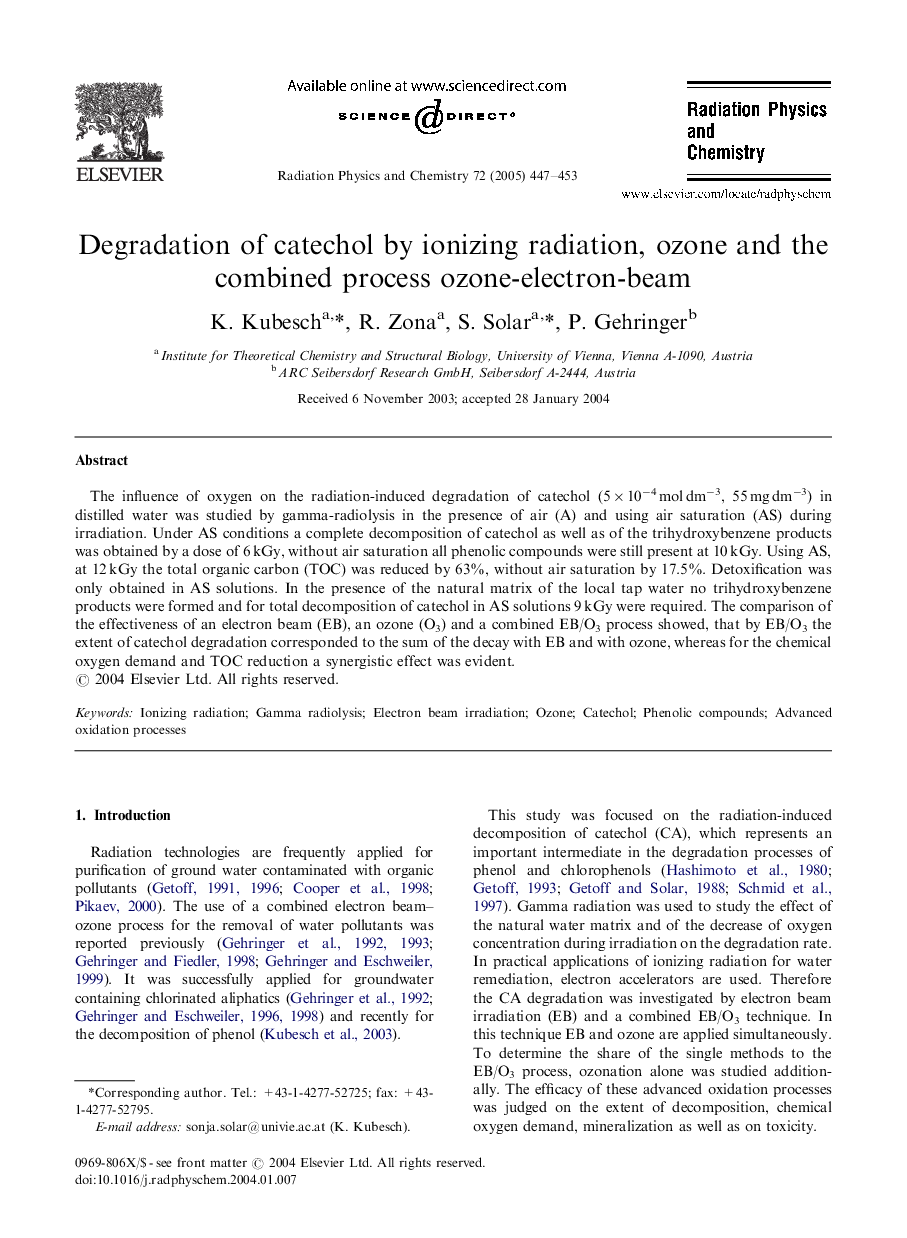| Article ID | Journal | Published Year | Pages | File Type |
|---|---|---|---|---|
| 10732181 | Radiation Physics and Chemistry | 2005 | 7 Pages |
Abstract
The influence of oxygen on the radiation-induced degradation of catechol (5Ã10â4 mol dmâ3, 55 mg dmâ3) in distilled water was studied by gamma-radiolysis in the presence of air (A) and using air saturation (AS) during irradiation. Under AS conditions a complete decomposition of catechol as well as of the trihydroxybenzene products was obtained by a dose of 6 kGy, without air saturation all phenolic compounds were still present at 10 kGy. Using AS, at 12 kGy the total organic carbon (TOC) was reduced by 63%, without air saturation by 17.5%. Detoxification was only obtained in AS solutions. In the presence of the natural matrix of the local tap water no trihydroxybenzene products were formed and for total decomposition of catechol in AS solutions 9 kGy were required. The comparison of the effectiveness of an electron beam (EB), an ozone (O3) and a combined EB/O3 process showed, that by EB/O3 the extent of catechol degradation corresponded to the sum of the decay with EB and with ozone, whereas for the chemical oxygen demand and TOC reduction a synergistic effect was evident.
Keywords
Related Topics
Physical Sciences and Engineering
Physics and Astronomy
Radiation
Authors
K. Kubesch, R. Zona, S. Solar, P. Gehringer,
